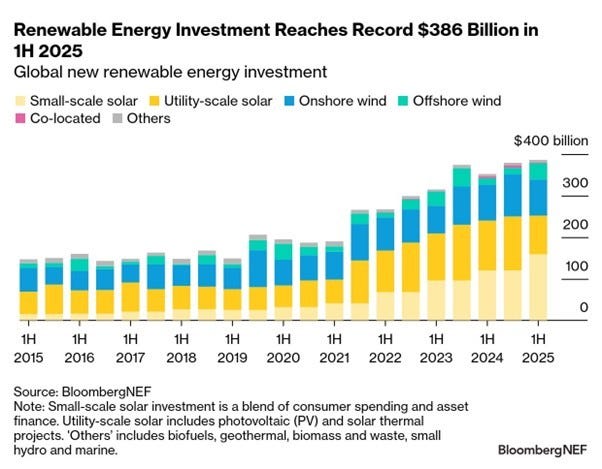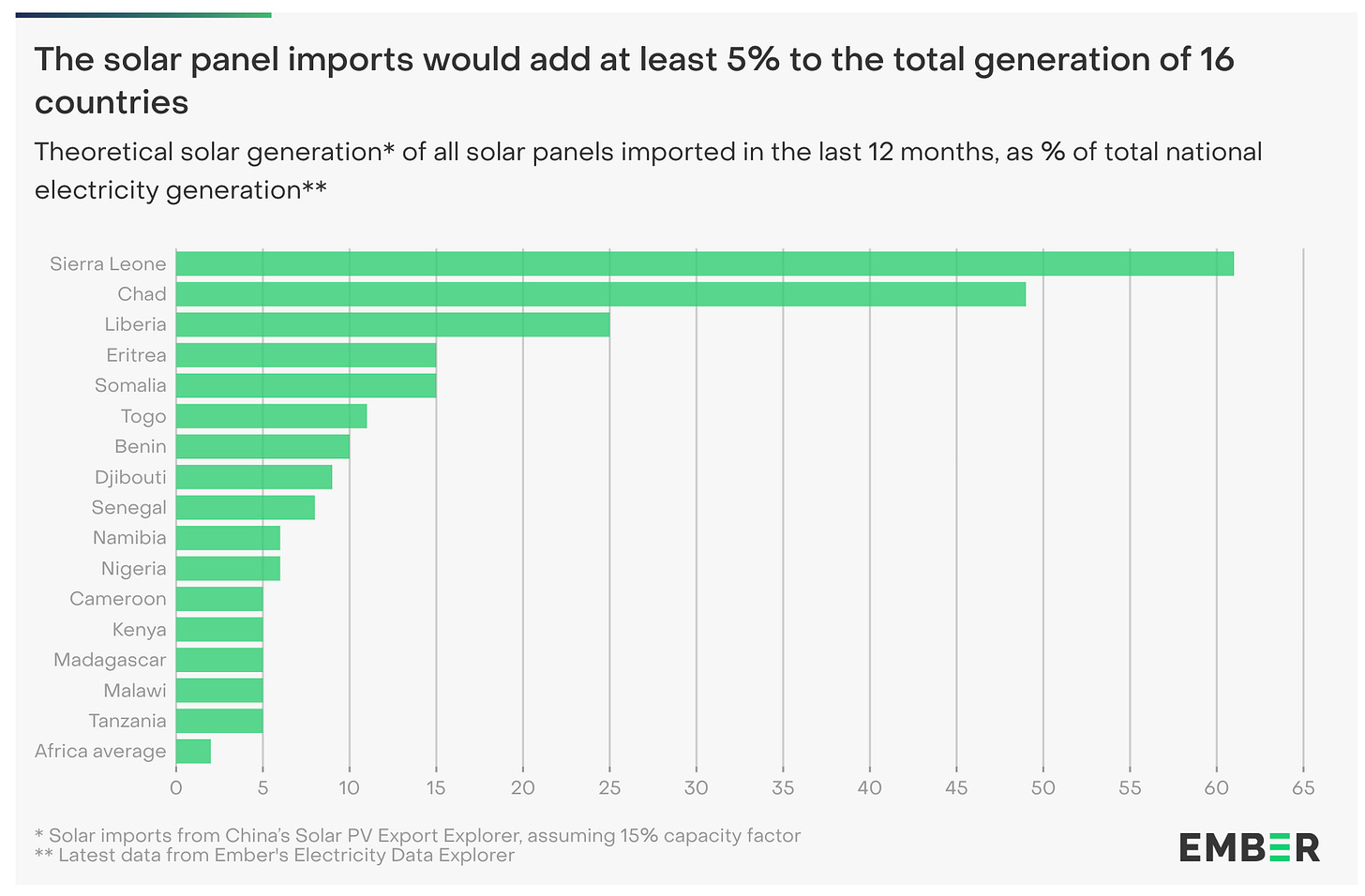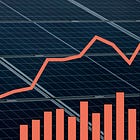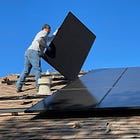While U.S. Clean Energy Growth Stalls, Africa’s Solar Revolution Surges Ahead
Some countries in Africa imported enough panels over the last 12 months to cover 50% of their annual electricity demand.
For clean energy in the US, 2025 has been a terrible, horrible, no good, very bad year.
Last Friday, I was about to sign off for the weekend when I got a text about the Trump adminstration’s latest attack on wind energy. For the second time this year, the Interior Department ordered an offshore wind farm to stop construction without citing any evidence of wrongdoing on the developer’s part.
Then on Monday, Bloomberg reported that the adminstration plans to remand and vacate a permit granted to a $6 billion wind farm planned off the coast of Maryland.
The next day, Bloomberg’s clean energy research arm BNEF published data showing that clean energy investment in the US fell 36% in the first half of 2025 compared to the year before.
But the US is just one country. In much of the rest of the world, the clean energy transition is accelerating. Global clean energy investment reached a record $386 billion in the first half of 2025, up 10% compared to the first half of last year.
In few places is clean energy growing faster than Africa, according to another report released this week. The think tank Ember has been tracking solar panel imports across the continent for the last year and they found that panel imports rose 60% in the last 12 months alone—what they cite as evidence of “a take-off in solar in Africa.”
Tracking clean energy adoption in Africa is notoriously difficult. There aren’t many government agencies that release reports on how solar panels were installed in a given month. That’s why Ember started tracking panel imports from China—the world’s largest producer of panels by a long shot—and using it as a proxy for adoption.1
In 16 African countries, solar panel imports over the last 12 months could be enough to cover at least 5% of their annual electricity generation. Sierra Leone imported enough solar panels to cover 60% of their country's annual electricity demand in the last 12 months. Chad imported enough to cover 50% of their demand.
These solar panels will help people across the continent get off the volatile rollercoaster that comes from relying on diesel generators and fossil fuel prices. Distributed solar will provide more stable electricity, powering homes and businesses during frequent fossil fuel blackouts.
As in the rest of the world, there's still much progress to be made. Nigeria has a staggering 28 GW of diesel generator capacity—much of it that could be economically replaced by solar and batteries. By comparison, over the last 12 months, the entire continent of Africa imported 15 GW of solar.
But the economics for solar look good. As Ember writes:
A solar panel can pay back imported diesel within months. In Nigeria, a 420 Watt solar panel retails for around $60 USD ($0.14 USD/watt), and would produce 550 KWh in a year. At the current diesel price of $0.66 USD per litre, $60 USD of diesel would make only 275 KWh of electricity, implying a payback time of just six months.
With economics like this, the energy transition could accelerate quickly. One lesson from the solar revolution is that growth often happens slowly and then all at once. Blink and you can miss a generational transformation.
Read more stories from Distilled
This is an imperfect measure, as Ember readily admits. You can read about the methodology and all the caveats at the bottom of the report.






